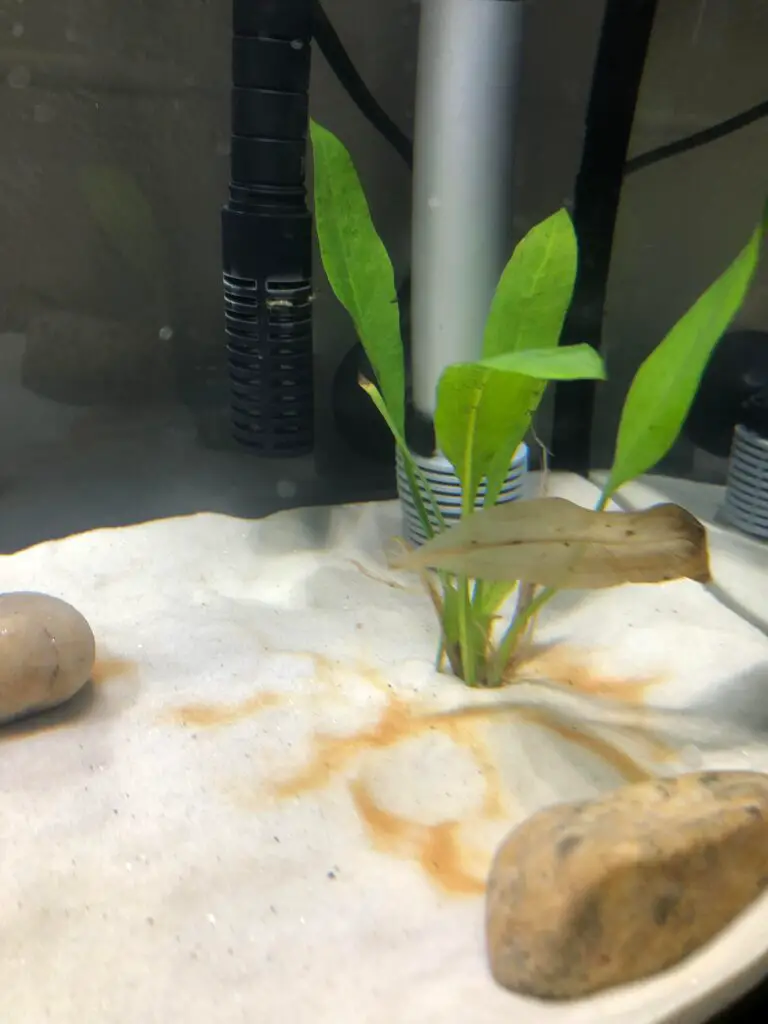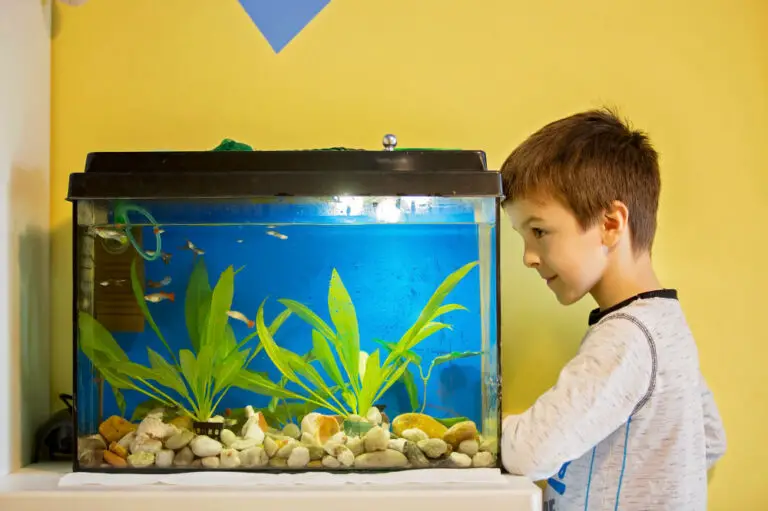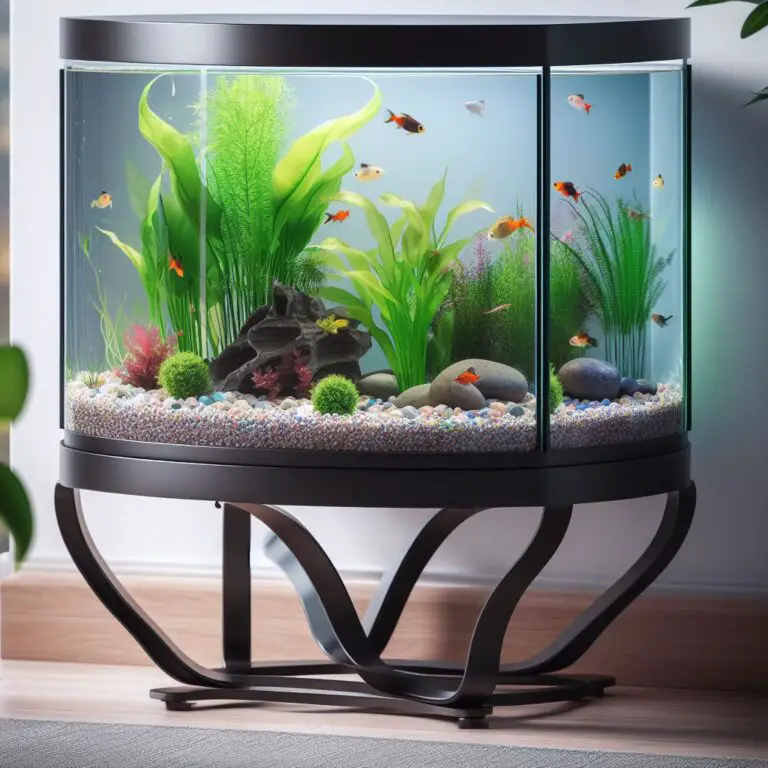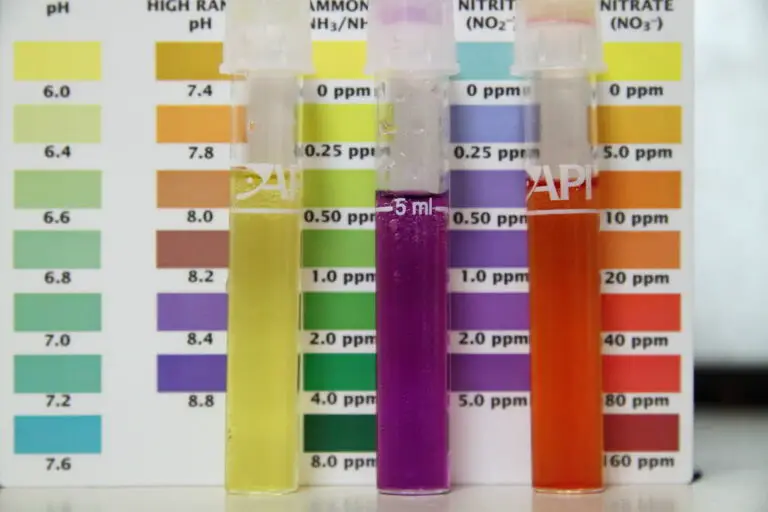Aquarium Wet Dry Filter
An aquarium wet/dry filter is a type of filtration system that uses water from the tank to fill a sump area, which contains various media for filtering the water. The water flows over the media where it is filtered and then pumped back into the tank. This type of filtration provides superior mechanical, chemical, and biological filtration compared to other methods because it can use multiple forms of media in one unit.
It also helps with oxygen exchange since air is drawn through the sump where it mixes with incoming aquarium water before returning to the tank. Wet/dry filters are often used on saltwater tanks due to their efficiency and ability to handle large amounts of waste without clogging up or becoming inefficient.
A wet/dry filter is an essential piece of equipment for any serious aquarium hobbyist. This type of filter helps to keep the water clean and clear by removing harmful toxins, debris, and excess waste. It also helps to maintain optimal oxygen levels in the tank which can be beneficial for both fish and plants alike.
The wet/dry filter works by drawing water from the main tank through a series of mechanical filtration media like carbon or sponges that trap small particles as well as biological media that provides a home for beneficial bacteria needed to break down organic material into harmless compounds. With regular maintenance, these filters can ensure your aquarium stays healthy and beautiful for years to come!

Credit: aquariumscience.org
What is a Wet Dry Filter for Aquariums?
A wet dry filter for aquariums is an essential piece of equipment that provides biological, chemical and mechanical filtration to keep your aquatic environment healthy. These filters are designed to circulate water through a series of chambers or trays, which contain various types of media such as activated carbon, ceramic rings, sponges, gravel and other materials. As the water passes through these filters, it removes ammonia and nitrite from the tank while also trapping debris like uneaten fish food and plant matter in its matrix.
This process helps create a balanced ecosystem with clear water by removing waste products before they can break down into toxic substances like nitrates that can be harmful for fish health. Additionally, it also helps maintain good oxygen levels in the aquarium since more surface area is available for gas exchange between air and water molecules when using a wet dry filter system.
Can You Use a Wet Dry Filter for Freshwater Aquarium?
Yes, a wet dry filter can be used for freshwater aquariums. A wet dry filter is an ideal filtration system to use in both saltwater and freshwater aquariums. It works by drawing water into the filter chamber with a powerhead or air pump and releasing it back out after passing through various levels of mechanical, chemical, and biological filtration media.
The most important benefits of using this type of filtration are that it helps maintain high water quality by removing waste particles from the tank while also providing beneficial bacteria with plenty of surface area to colonize on so they can break down harmful toxins like ammonia and nitrite. Additionally, having more surface area allows for better oxygen exchange which creates healthier living conditions for fish species requiring higher oxygen levels. Wet dry filters come in different sizes to accommodate varying tank sizes as well as customizable configurations depending on your specific needs (e.g., if you want additional chemical filtration).
All in all, a wet dry filter is one of the best types of filters available today that provides excellent performance without taking up too much space or energy consumption making them perfect for any size freshwater aquarium!
How Do You Set Up a Wet Dry Aquarium Filter?
Setting up a wet dry aquarium filter can be an intimidating process, but with the right knowledge and tools it is actually quite easy. To begin, you’ll need to purchase the appropriate size filter for your tank. After that, attach one end of the tubing to the filter outlet and secure it in place with clamps or ties.
Next, connect the other end of the tube to an overflow box so that water from your tank can flow into the filter. Once connected you’ll want to fill up both sides of your wet/dry filtration chamber with Bio-Balls or similar media material designed for biological filtration. Finally, plug in your pump and turn on all valves before allowing water back into your tank – this should complete setting up your wet dry aquarium filter!
Are Trickle Filters Any Good?
Trickle filters are a type of filtration system for aquariums that use a form of wet/dry filter media to help remove chemical and solid waste from the water. They can be beneficial in certain scenarios when used correctly, but they can also cause issues if used improperly. Trickle filters provide mechanical and biological filtration which helps create crystal clear water by removing physical particles from the tank, as well as providing an area for beneficial bacteria to colonize.
This bacteria is vital for keeping ammonia levels low as it breaks down organic waste into less toxic forms. Trickle filters also add oxygen-rich air bubbles into the water column which increases oxygen levels and helps promote healthier fish overall. On the other hand, trickle filters can become clogged with debris easily if not maintained properly or if too much food is added during feeding times leading to reduced efficiency or even complete blockage of flow through them at worst.
In addition, they require more maintenance than some other types of filter systems due to needing regular cleaning and changing out of media regularly in order to keep working effectively over time.
Is a Wet Dry Filter the Same As a Sump?
No, a wet dry filter and a sump are not the same thing. A wet dry filter is designed to remove ammonia, nitrites, and some other toxins from an aquarium by using biological filtration. It consists of two parts; the first part is filled with bioballs that house beneficial bacteria which convert these toxins into less harmful substances.
The second part contains foam or sponges which trap solid particles and debris that are suspended in the water column. As water passes through this chamber it is filtered and cleaned before being returned to the tank.
A sump on the other hand serves as both a filtration system and a reservoir for additional water volume in your aquarium setup – helping create more stability in terms of temperature (with chiller/heater support) as well as pH levels compared to just having one single tank unit alone.
How Do You Make a Wet Dry Trickle Filter?
Making a wet dry trickle filter is actually quite simple and straightforward. The most basic way of making one involves using an aquarium sump, which is basically a large container that sits at the bottom of your tank. You’ll then need to add some rocks or other media to the sump, such as ceramic noodles or biomedia.
Once you’ve done this, attach a water pump to the sump, and use it to circulate water from the top of your tank through the filter media in the sump before returning it back into your aquarium. This process should be repeated several times each hour for optimal filtration performance. In addition to providing mechanical filtration by trapping debris in its filter media, a wet dry trickle filter also provides biological filtration by encouraging beneficial bacteria growth on its surface area and helping break down ammonia produced by fish waste into nitrates that are less harmful for aquatic life.
With regular cleaning and maintenance these types of filters can last many years with minimal fuss!
FAQ #23: Why are wet dry filters not recommended by most reefers?
Wet/Dry Filter vs Sump
For aquarium enthusiasts, the choice between a wet/dry filter and a sump can be confusing. The main difference is that the wet/dry filter is an external filtration system for your tank which utilizes mechanical and biological filtration, while the sump is an internal water reservoir with additional filtration options such as protein skimming and refugiums. Wet/Dry filters are designed to provide efficient mechanical filtration by trapping debris before it has a chance to break down in your aquarium, whereas sumps tend to focus on providing more advanced types of chemical or biological filtration.
Both systems offer their own advantages and disadvantages depending on what type of setup you have in mind for your fish tank – so it’s important to research thoroughly before making a decision!
Wet/Dry Filters for Saltwater Aquariums
Wet/Dry filters are a type of filtration system used for saltwater aquariums that use both mechanical and biological processes to remove debris and impurities from the water. Wet/dry filters provide an efficient method of removing excess nitrates, phosphates, and other pollutants from the tank. They also increase oxygen levels in the water by aiding in aeration as well as providing a place for beneficial bacteria to thrive which helps maintain a healthy aquatic environment.
Wet/dry filters come in different sizes and configurations so it is important to choose one appropriate for your tank size and inhabitants.
What is a Wet/Dry Filter
A wet/dry filter is a type of aquarium filtration system that combines biological, chemical and mechanical filtration to clean water. It typically consists of a combination of an overflow box, protein skimmer and pump. The main purpose of the wet/dry filter is to provide efficient biological filtration by allowing beneficial bacteria to colonize within its media.
This helps break down harmful toxins in the aquarium water while also providing oxygenation for fish and other aquatic life.
Eshopps Wet/Dry Filter
The Eshopps Wet/Dry Filter is a versatile, efficient filter option for your aquarium. It utilizes both mechanical and biological filtration to provide clean, healthy water for your tank inhabitants. This filter’s unique design allows it to be used as either an internal or external filter and includes adjustable flow rates depending on your needs.
Additionally, the included media baskets make routine maintenance and cleaning easy, allowing you to keep up with regular aquarium care without hassle.
Wet/Dry Filter vs Canister
A wet/dry filter and a canister filter are both popular options for aquarium filtration, but they have some key differences. The main difference between the two is that a canister filter is external to the tank while a wet/dry filter is internal. A wet/dry filter uses an internal chamber to separate solid waste from water before it returns back into the tank, while a canister relies on mechanical and biological filtration media to remove debris and pollutants from your aquarium water.
Wet/Dry filters provide more efficient mechanical filtration as well as better oxygenation of the water, but require more maintenance than Canisters due to their complexity. On the other hand, Canisters are usually easier to maintain since all of their components are easily accessible outside of your tank. Both types offer effective filtration for most tanks; however, depending on what type of fish you keep or how heavily stocked your tank is, one may be better suited for you than another.
Wet/Dry Vacuum Filter
A wet/dry vacuum filter is a type of filter that is used to separate dirt and debris from liquids. This type of filter allows for both dry and wet vacuums to be used on the same machine, making them ideal for high traffic areas such as garages, workshops, or basements. The filters are designed to capture tiny particles like dust and pollen while allowing larger objects such as paperclips or nails to pass through without causing damage.
Wet/dry vacuum filters are an effective way to keep your work area clean and free of allergens while also ensuring that no major blockages occur in the machinery’s internal components.
Conclusion
Overall, a wet dry filter is an excellent filtration system for any aquarium. It effectively removes debris and toxins from the water while also promoting beneficial bacteria growth to help keep the tank clean and healthy. With minimal maintenance required, it’s the perfect choice for anyone looking for a reliable and efficient way to maintain a clean environment for their aquatic inhabitants.





